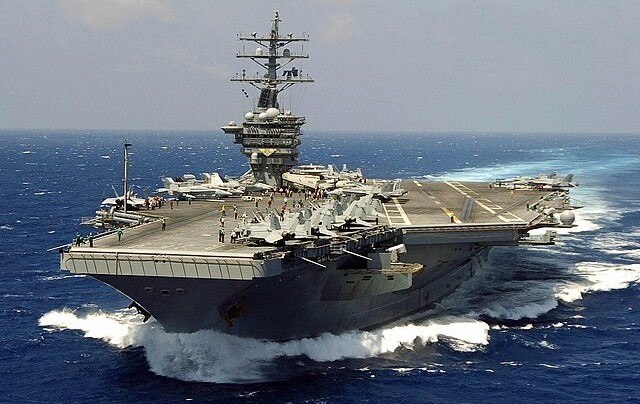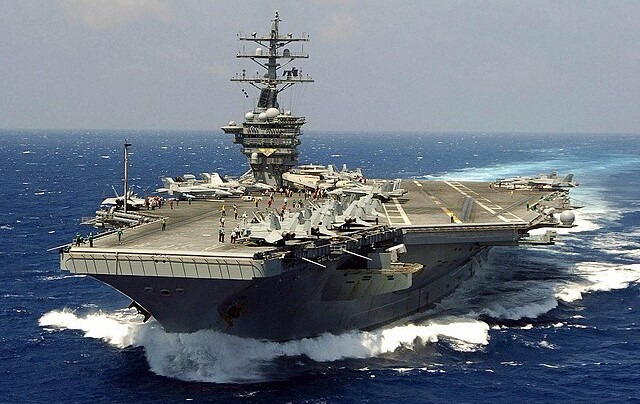“Talking Transportation”
By Jim Cameron
President
CAMERON COMMUNICATIONS INC
Author: “Off The Record: Confessions of a Media Consultant“
Did you know that the US Navy is now engaged in its biggest sea battle since World War II?
That’s the news from the Red Sea where US Navy and other allies’ warships are patrolling the waters, trying to keep shipping safe on its way to and from the Suez Canal despite constant bombardments by the Houthis.

That renegade faction in Yemen, with weapons supplied by Iran, has been attacking ships since November using drones, missiles and unmanned surface vessels (boat bombs). They claim to be doing these attacks because of Israel’s invasion of Gaza, but their targets have included many ships with no ties to that country.
Those attacks (60 so far) have sunk two ships and killed four mariners, most recently this week in an attack captured on video by a boat bomb on a Greek-owned bulk carrier.
Why should we care? Two reasons:
First, 12% of all the world’s shipping goes through the Suez Canal, or used to. Because of the Houthi attacks and resulting “surge pricing” (up 900%) for war risk insurance, most ships bound from Asia to Europe are now taking the longer, safer route around the tip of Africa adding 4000 miles and about 14-18 days of extra travel time and a 70% bump in fuel costs. That means shipments are late and the added cost ($1000 per shipping container) is being passed along to customers.
Aside for the now-all-too-familiar “supply chain disruptions”, these attacks have now put US sailors literally in harm’s way.
The aptly named Red Sea safety patrols of “Operation Prosperity Guardian” include the US aircraft carrier Eisenhower and its escort ships (cruisers, destroyers and support vessels) staffed with a combined 6000 – 7000 crew members. Now, they too, are under attack by the Houthis.

For nine months the US Navy ships have been under constant alert, watching for incoming attacks… some with swarms of low-speed armed drones, others with anti-ship cruise missiles or even 15,000 mph ballistic missiles.
That means that, 24 x 7, these US warships are watching for Houthi attacks, sometimes responding with American warplanes, missiles and, as a last resort, the Phalanx Gatling gun which fires 3000 rounds per minute with a range of about one mile. From the time of a Houthi missile launch to possible impact on a target, we’re talking about minutes, maybe even seconds.
Nothing would please the Houthis more than hitting a US Navy ship. And they’ve already made several claims of bombing the USS Eisenhower, though those claims seem to be more for domestic PR than based in fact.
The US and its allies have fired back on the Houthis’ radar sites, but the guerillas’ truck-mounted launch systems are almost impossible to track let alone destroy. And the supply of Iranian armaments seems endless.
How will the Pentagon react if (or when) a US Navy ship takes a direct hit or American sailors are injured or killed? What would an escalation of this war mean to the world’s economy, still struggling to recover?
Jim Cameron is founder of the Commuter Action Group and advocates for Connecticut rail riders. His weekly column “Talking Transportation” is archived here. You can contact Jim at CommuterActionGroup@gmail.com.”

